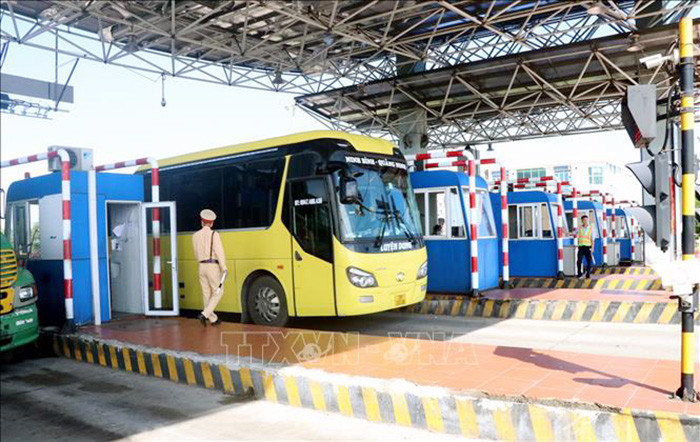Mr. Nguyen Manh Thang, Deputy Director of the Vietnam Road Administration, shared that after nearly a year of completely implementing automatic non-stop toll collection (ETC) on all expressways, the implementation of ETC has been basically successful.

Bach Dang Bridge Toll Station on Ha Long - Hai Phong Expressway implements non-stop toll collection
As of May 31, 2023, 4,759,346 vehicles nationwide had been affixed with terminal tags, reaching a rate of 92%. ETC toll collection has been fully implemented on toll highways. For national highways, only one mixed/one-way toll lane is arranged, the remaining lanes are purely ETC toll collection. In addition, card errors and no money in traffic accounts have decreased significantly after nearly 1 year of operation.
This has helped vehicles move quickly and safely, overcoming traffic congestion at toll stations at the gateways of major cities and major routes, especially during the recent holidays and Tet, which has been recognized and highly appreciated by public opinion and people.
Mr. Nguyen Manh Thang added that the initial implementation of the non-stop automatic toll collection service at toll stations encountered many difficulties. However, thanks to the strong direction from the Government, the Ministry of Transport, the active participation of relevant agencies and especially the propaganda and encouragement of news agencies and newspapers, the implementation of ETC was successful.
“ETC toll collection is the first time this service has been applied in Vietnam, so there are many problems. However, thanks to the propaganda, analysis and discussion of the press about the benefits of ETC such as contributing to reducing traffic congestion, contributing to environmental protection, financial transparency in toll collection... it will help save costs for society as well as bring many benefits to people, businesses and state management agencies,” Mr. Nguyen Manh Thang analyzed.
Mr. To Nam Toan, Head of the Department of Science, Technology, Environment and International Cooperation (Vietnam Road Administration) said that according to the Government's policy, the Ministry of Transport will implement ETC fee collection in 4 phases.
Phase 1: There is a barrier at the toll station. The vehicle owner's traffic account must have enough balance to pay the toll before the barrier opens for the vehicle to pass through the station.
Phase 2: There are still barriers but customers can pay the toll after passing through the station.
Phase 3: Remove the barrier, this is the transition phase to phase 4. If the car owner pays the fee later without any problems, it will move to phase 4 in 6 months to 1 year.
Phase 4: Remove barriers and toll stations, only ETC devices hung on racks for vehicles to pass freely like in Taiwan (China) and Singapore.
"Up to now, we have achieved 92% of the number of vehicles with cards and topping up to use the service. This is a prerequisite to move to phase 2 and phase 3 - allowing vehicle owners to pay later and remove barriers," said Mr. To Nam Toan.
With a number of North-South expressway projects completed and under construction, by 2025 Vietnam will have 3,000 km of expressway and by 2030 there will be about 5,000 km, the need to apply technology for management and operation is very large.
According to the leader of the Vietnam Road Administration, to manage the operation of this number of kilometers of highway, the Ministry of Transport has developed a project to invest in and manage the operation of intelligent transportation systems (ITS) on highways. Accordingly, a synchronous ITS system will be built; in which, for the North-South Eastern Expressway, it is expected to implement non-stop electronic toll collection in the form of closed toll collection, inter-route without barriers...
According to VNA